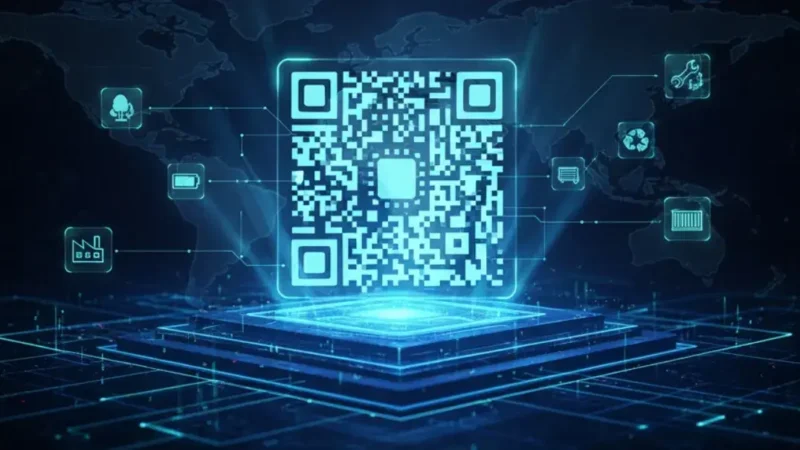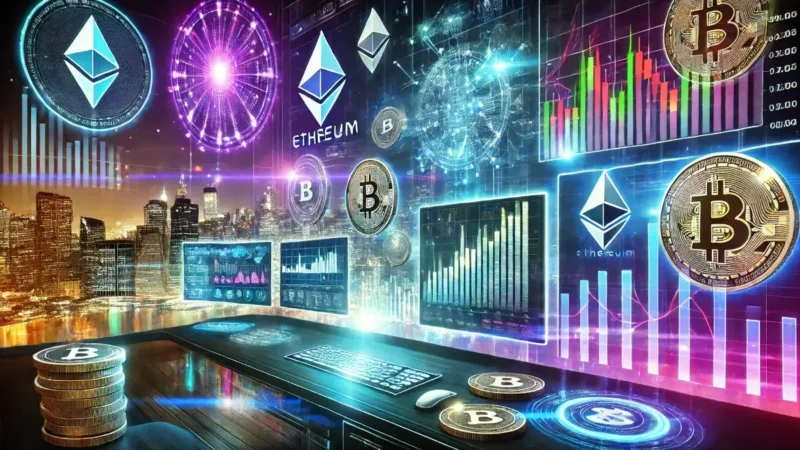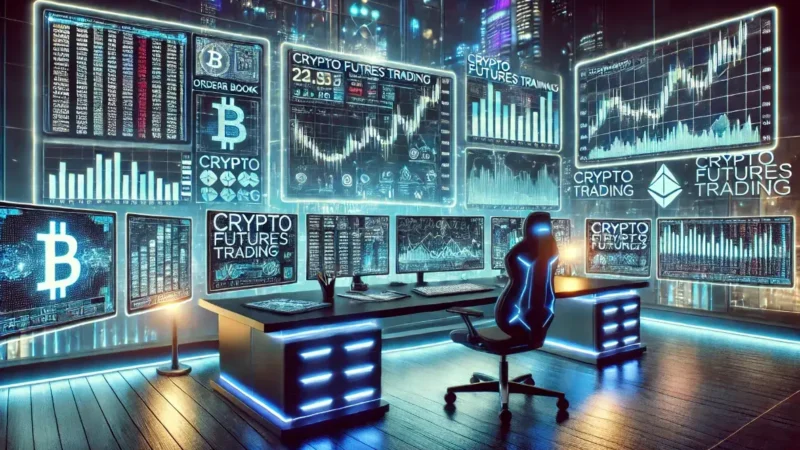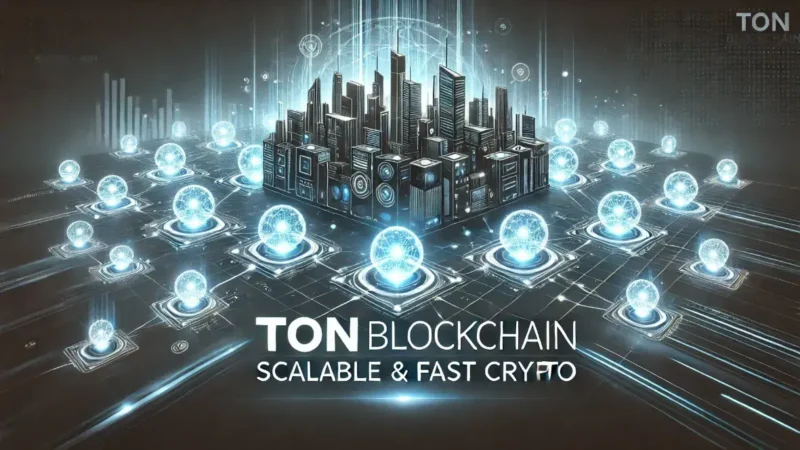Exploring Metaverse Technology: The Future of Virtual Interaction
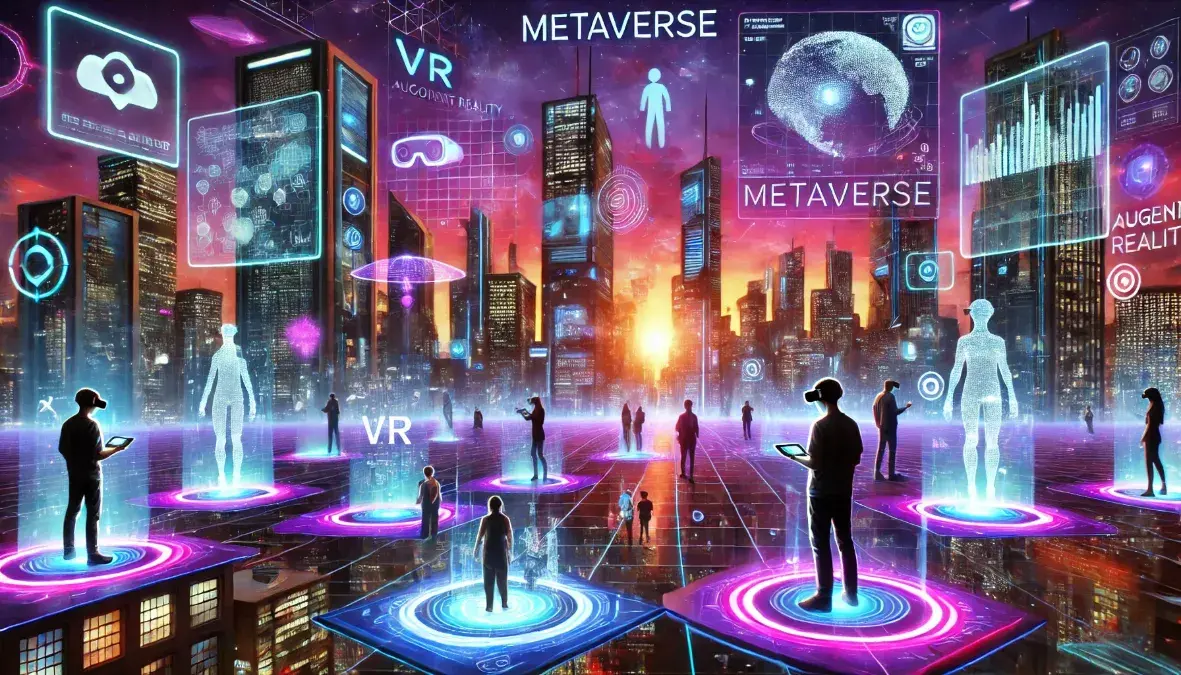
Introduction to the Metaverse
The concept of the metaverse has emerged as a prominent topic of discussion in recent years, particularly within the realm of technology and digital interaction. At its core, the metaverse refers to an expansive virtual universe that integrates both physical and digital experiences. This environment enables users to engage with one another and the surrounding digital world through immersive technologies such as virtual reality (VR) and augmented reality (AR).
Table of Contents
The origins of the metaverse can be traced back to early instances of virtual worlds and online gaming, where users could interact in a shared digital space. One of the pivotal milestones was the release of “Second Life” in 2003, which allowed players to create avatars and interact in a virtual economy. Over time, advancements in technology have fueled the evolution of metaverse environments, leading to more sophisticated applications and a broader acceptance of immersive experiences in everyday life.
Today, the significance of metaverse technology is increasingly recognized in multiple sectors, including entertainment, education, and business. With the rise of social platforms that incorporate these technologies, users can seamlessly transition between real-world interactions and their digital counterparts, blurring the lines that once separated these experiences. The metaverse has not only redefined how people interact but has also given rise to new economic opportunities, including digital real estate and virtual goods marketplaces.
As society becomes more technology-driven, understanding the metaverse is essential. It promises to revolutionize the way we communicate, collaborate, and create in a rapidly changing digital landscape. The continuing development and integration of metaverse technology will likely shape the future of virtual interaction, offering exciting possibilities for human connection in the digital age.
Key Technologies Driving the Metaverse
The concept of the metaverse is underpinned by a multitude of advanced technologies that work in synergy to create immersive and interactive environments. Four key technologies—blockchain, artificial intelligence (AI), virtual reality (VR), and augmented reality (AR)—are particularly influential in shaping the future of virtual interaction.
Blockchain technology serves as the backbone of trust and security within the metaverse. By providing decentralized, transparent ledgers, it enables digital ownership and facilitates transactions involving virtual assets. This technology not only secures the assets but also empowers users to create and exchange unique items, such as non-fungible tokens (NFTs), thereby paving the way for new economic models within virtual spaces.
Artificial intelligence is integral to enhancing user experiences in the metaverse. AI algorithms can analyze user behavior, personalize experiences, and create realistic virtual characters known as avatars. Through machine learning, these avatars can communicate and interact in ways that resemble human interaction, making virtual environments more engaging and lifelike. The application of AI extends into content creation and simulation, where it can generate dynamic environments based on user inputs and preferences.
Virtual reality immerses users in computer-generated environments where they can interact in real-time. This technology relies on headsets and motion-tracking devices to create a sense of presence within virtual spaces. As VR continues to evolve, advancements such as improved graphics and haptic feedback technology will further blur the line between the physical and digital worlds.
Augmented reality complements the metaverse by overlaying digital content onto the real world. Through devices such as smartphones and AR glasses, users can experience enhanced interactions that incorporate both physical and virtual elements. As AR technology improves, it will enable more seamless interactions and provide enriched experiences, facilitating deeper connections to the metaverse.
In summary, the combination of blockchain, AI, VR, and AR is revolutionizing how we engage with virtual spaces. Each technology contributes unique capabilities that, when integrated, create an expansive and dynamic metaverse, rich with possibilities for future exploration and interaction.
Applications of Metaverse Technology
The advent of metaverse technology has generated significant interest across various sectors, heralding new opportunities for innovation and virtual interaction. One of the most visible applications can be found in gaming. Platforms such as Roblox and Fortnite do not only provide traditional gaming experiences; they also facilitate virtual economies, social interaction, and user-generated content, creating immersive environments that extend beyond competition into creative collaboration.
In the realm of education, metaverse technology is transforming how knowledge is imparted and absorbed. Virtual classrooms and educational simulations, exemplified by platforms like ENGAGE and Mozilla Hubs, allow students to participate in experiential learning. These environments foster greater engagement by providing interactive experiences, such as historical reenactments and science experiments, which can enhance understanding and retention of complex concepts. By merging digital and physical learning, educators can create more comprehensive learning experiences.
The real estate industry is also witnessing a paradigm shift due to the influence of metaverse technology. Virtual tours and property showcases have become increasingly common, enabling potential buyers to explore listings from the comfort of their homes. Platforms like Matterport facilitate 3D scanning and modeling, giving prospective clients immersive virtual experiences of properties. Additionally, some companies are even exploring digital real estate, where virtual land can be bought, sold, or developed within established metaverse environments.
Furthermore, metaverse technology has significantly impacted the sphere of virtual events. The integration of advanced platforms like Spatial and AltspaceVR allows for the hosting of conferences, exhibitions, and social gatherings in a fully immersive virtual setting. These platforms provide an interactive experience that brings together participants from around the globe, creating opportunities for networking and collaboration that transcend geographical limitations.
The applications of metaverse technology are vast and varied, presenting exciting possibilities across different sectors. As technology continues to evolve, we can expect further innovations that will reshape our interactions in the digital age.
The Social Implications of the Metaverse
The emergence of metaverse technology is reshaping social interaction and community building, allowing for new forms of engagement that blend physical and virtual realities. As individuals increasingly inhabit these immersive digital spaces, we witness the potential for the development of unique social norms that differ markedly from those in traditional environments. For instance, the removal of geographical barriers enables individuals from diverse backgrounds to connect, forming communities based on shared interests rather than location, thus promoting inclusivity.
However, this shift also presents challenges. The blending of online and offline lives can lead to complications in personal relationships. For some, the metaverse may serve as an escape from reality, potentially detracting from face-to-face interactions and leading to social isolation. The nature of virtual interactions can foster superficial connections, which raises concerns about the depth and authenticity of relationships formed within these digital domains. Individuals may experience difficulties transitioning between these realities, influencing their emotional well-being.
Moreover, the metaverse introduces new dynamics concerning social behavior. Users may adopt personas or avatars that allow them to express themselves in ways that may not be possible in real life, challenging existing social norms and encouraging creativity. On the flip side, this anonymity can result in negative behaviors, such as cyberbullying or harassment, which could undermine the safety and comfort of virtual communities.
In considering both the positive and negative implications of metaverse technology, it becomes evident that while virtual environments offer unprecedented opportunities for collaboration and socialization, they also pose significant challenges. Striking a balance between harnessing the benefits of these digital spaces and addressing the associated risks will be crucial for fostering healthy interactions within the metaverse.
Challenges and Concerns in the Metaverse
As metaverse technology continues to evolve, various challenges and concerns arise that must be addressed to ensure its sustainable development. One significant issue is privacy. As users engage in virtual environments, vast amounts of personal data are collected. This data includes user behavior, preferences, and even biometric information. Without stringent privacy controls, individuals risk exposure to unauthorized access or misuse of their personal information. As users navigate these immersive experiences, the question remains: how can privacy be preserved while still delivering personalized experiences?
Alongside privacy, security risks represent another critical hurdle in the adoption of metaverse technology. Cyber threats such as hacking and phishing attempts could jeopardize not only user accounts but also financial assets tied to virtual currencies or items. Ensuring robust security measures will be imperative for protecting users and maintaining trust in these emerging digital realms. Consequently, virtual platforms must prioritize the implementation of security protocols that can adapt to evolving threats.
Moreover, the digital divide poses a significant challenge. While metaverse technology has the potential to revolutionize social interaction and commerce, access to these platforms is not universal. Disparities in connectivity, hardware availability, and technical literacy generate inequalities, leading to an exclusion of certain demographics from the virtual landscape. Bridging this gap is vital for creating an inclusive metaverse where everyone can participate in and benefit from its advancements.
Finally, the potential for addiction must be acknowledged. As users immerse themselves in captivating virtual experiences, the risk of overindulgence looms. Developing healthy engagement practices will be crucial to mitigate this risk and ensure a balanced approach to virtual interaction. To summarize, addressing privacy, security, accessibility, and addiction is essential as we explore the uncharted territories of metaverse technology. As we navigate this new virtual frontier, tackling these challenges will pave the way for a safer and more equitable digital future.
Economic Impacts of the Metaverse
The emergence of metaverse technology is significantly reshaping the global economy by introducing innovative avenues for commerce and engagement. Central to this transformation is the rise of virtual real estate, where users can buy, sell, and develop land within digital environments. This phenomenon has led to the creation of expansive virtual worlds that mimic real-life economies, allowing businesses to establish a presence within the metaverse. As virtual property values continue to soar, traditional concepts of real estate investment are being redefined, creating new economic paradigms for both investors and entrepreneurs.
Furthermore, non-fungible tokens (NFTs) have revolutionized ownership and digital content distribution. By allowing creators to tokenize their artwork, music, and other forms of intellectual property, NFTs have opened up a marketplace that thrives on scarcity and uniqueness. This development not only empowers artists and content creators to monetize their work directly but also fuels a burgeoning secondary market where digital assets can be traded. Various industries, including gaming and entertainment, are leveraging the potential of NFTs, further blurring the lines between digital ownership and economic sustainability.
The metaverse also fosters the emergence of new business models that challenge traditional retail structures. Brands are increasingly setting up virtual storefronts to connect with consumers in immersive, interactive environments. This shift not only enhances customer engagement but also enables companies to gather valuable data insights that inform their marketing strategies. As companies explore these digital frontiers, new opportunities arise for entrepreneurs to create innovative experiences that captivate the consumer’s imagination. In essence, the economic impacts of metaverse technology are vast and multifaceted, significantly influencing traditional businesses while paving the way for future innovations in commerce.
Future of Work in the Metaverse
The emergence of metaverse technology is significantly redefining the workplace dynamics and work culture across various industries. As companies strive to adapt to an increasingly digital landscape, remote work trends have escalated, leading to the creation of innovative virtual coworking spaces. These environments, designed using metaverse principles, facilitate collaboration among global teams, enabling them to engage, share ideas, and problem-solve in real time, regardless of geographic location.
One of the most notable advancements contributed by metaverse technology is the gradual shift towards immersive training environments. Organizations can now leverage virtual reality (VR) and augmented reality (AR) to create realistic simulations that enhance employee learning and development opportunities. This approach not only streamlines training processes but also cultivates a more engaging atmosphere, allowing employees to practice skills in simulated scenarios before applying them in real-life settings. The metaverse effectively bridges the gap between theory and practice, ensuring employees are better prepared for their responsibilities.
Moreover, as the workforce continues to evolve, organizations are recognizing the necessity of fostering a culture that supports remote work and virtual collaboration. This transition requires various skillsets, including digital literacy, adaptability, and communication proficiency, which are becoming increasingly essential for future professionals. Companies are now investing in upskilling programs to equip their employees with the knowledge and tools required to navigate this new work environment effectively. The integration of metaverse technology into corporate strategies presents an opportunity to reimagine how organizations operate, enabling them to build resilient and agile workplaces designed for the challenges of tomorrow.
Cultural Influences in the Metaverse
The metaverse technology represents an innovative frontier where cultural boundaries can expand and diversify. It is a space that facilitates artistic expression, enabling users to create, share, and experience varying forms of art and music in a virtual environment. This platform allows for a confluence of different cultures, offering artists and creators the opportunity to present their work to a global audience. Through immersive experiences, users can engage with diverse expressions of culture, particularly in ways that are often inaccessible in the physical world.
The impact of metaverse technology on local cultures cannot be understated. As users from different backgrounds converge in virtual spaces, there is a poignant blending of global and local traditions. This interaction fosters cultural exchange and dialogue, potentially leading to richer artistic forms and collaborative projects. For instance, musicians can host virtual concerts that showcase traditional music alongside contemporary genres, thereby preserving cultural heritage while simultaneously innovating new styles. Furthermore, creators can find inspiration from various cultural motifs, leading to the emergence of unique hybrid art forms.
Stay informed, read the latest crypto news in real time!
Conclusion and Future Outlook
As this exploration of metaverse technology comes to a close, it becomes evident that this innovative landscape has the potential to transform the way we interact, work, and even play. The metaverse represents a convergence of virtual reality, augmented reality, and digital collaboration, creating a rich ecosystem that allows for immersive experiences beyond the physical realm. Key takeaways from this examination include the metaverse’s ability to foster community, enhance education through virtual learning environments, and reshape entertainment by offering interactive experiences that engage users in novel ways.
Looking ahead, the future development of metaverse technology will likely witness significant trends and breakthroughs. One prominent prediction involves the integration of advanced artificial intelligence, which could further enhance user experiences by providing personalized interactions within virtual spaces. Additionally, the ongoing evolution of blockchain technology may lead to greater decentralization, ensuring users have more control over their digital assets and identities. As these technologies converge, the metaverse may also become a vital platform for businesses, enabling new models of commerce and engagement that blur the lines between digital and physical goods.
As the metaverse continues to evolve, it is imperative for individuals and organizations alike to engage critically with this burgeoning technology. Questions surrounding privacy, security, and the ethical implications of virtual interactions require thorough consideration. The potential for social change driven by the metaverse is immense, and with it comes a responsibility to shape it thoughtfully. From redefining workplace dynamics to enhancing social connections across vast geographical divides, the metaverse offers an exciting yet complex future that invites us all to participate and shape its trajectory. The journey ahead is not just about technology; it is also about how we envision and construct our shared virtual realities.

